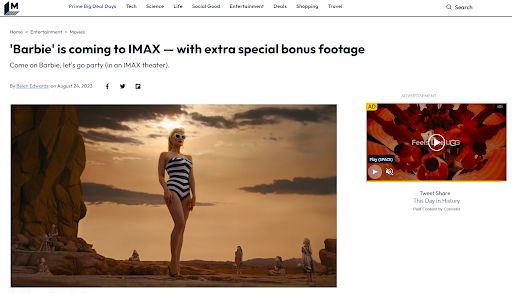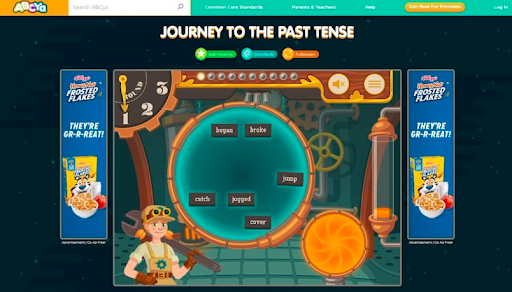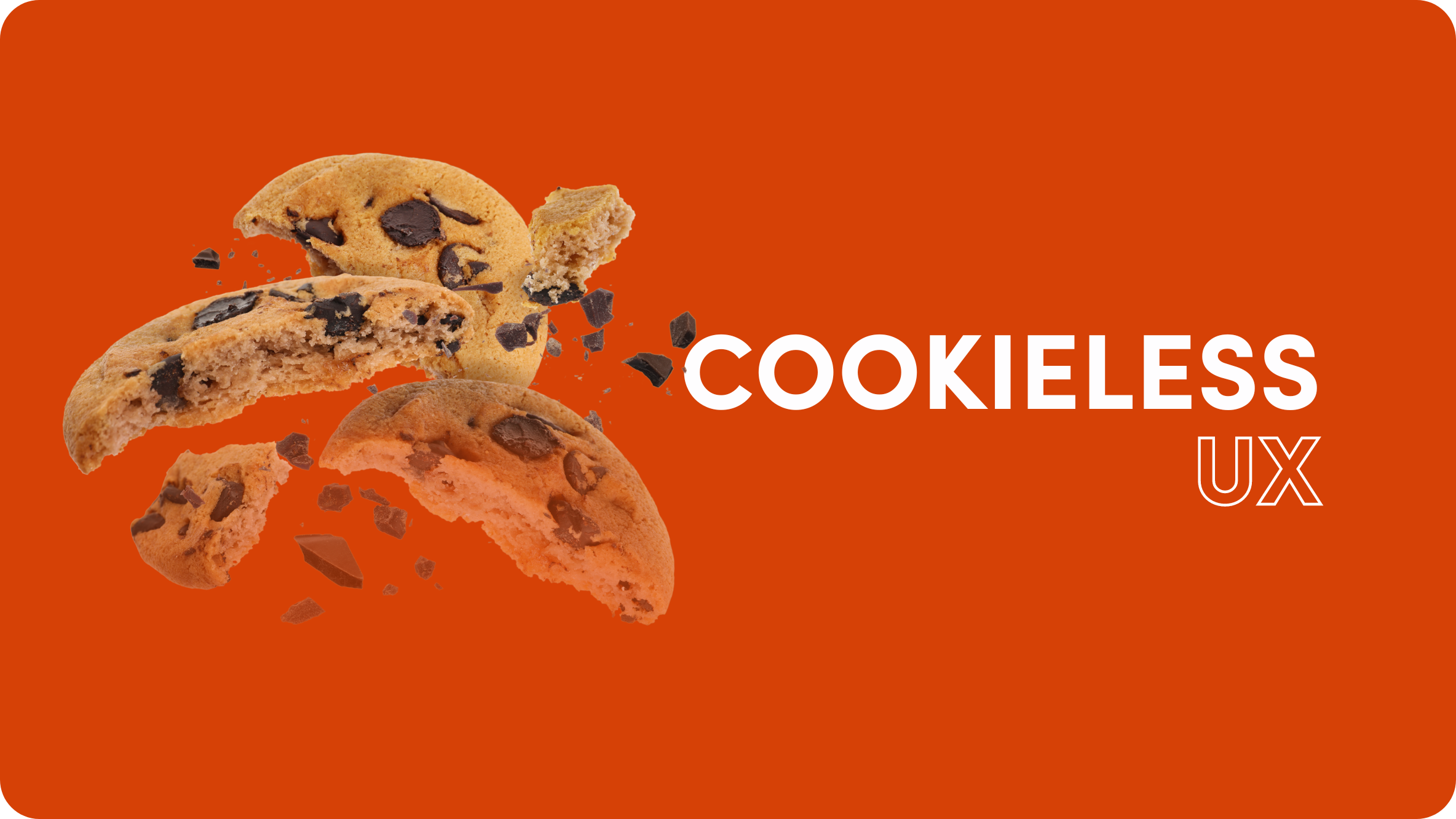The Beginner’s Guide to Contextual Advertising

Imagine walking into your favorite coffee shop and ordering your usual caramel macchiato.
You take a seat and as you sip your drink, a barista brings over a free slice of caramel cheesecake, saying it goes really well with your coffee choice.
The next time you visit, a discount coupon for a caramel-flavored treat pops up on your loyalty app.
Now, wouldn’t that make you feel right at home there – like you belong?
Contextual advertising does pretty much the same thing when you’re online.
It serves up ‘treats’ in the form of ads related to the type of content you’re viewing. It’s a powerful way to quickly target ads to the right kind of viewers. And the best thing? It doesn’t rely on your personal data, so you see relevant ads while staying safe and private online. For advertisers, contextual advertising provides a viable alternative to cookie tracking and third-part data, which will soon be phased out of use.
For this reason, contextual advertising has caught on in recent years and continues to grow in popularity. Statista predicts that contextual advertising spending will reach $562 billion by 2030, up from approximately $200 billion in 2022.
In this starter guide, we’ll help you understand contextual advertising, how it works, and how it benefits your advertising strategy. We’ll also explore the different types of contextual advertising, popular contextual advertising platforms, and real-life examples to get your creative juices flowing.
What is Contextual Advertising?
People are pretty clued up about online data privacy these days, and they’re more likely to disallow cookies or use incognito browsers.
This means that behavioral ads are becoming less effective and contextual advertising is gaining ground.
Contextual ads are online ads that are served to viewers based on the content or page they are viewing in that moment, rather than user data like location or demographics. In a world without ‘cookies’ this makes it more effective than behavioral ads.
For example, if you visit the sports page of a news website, you may see ads for gym equipment or sportswear. If you visit a heavy metal music site, you may see ads for an upcoming Metallica concert.
It works for B2B advertising too. For instance, if you’re reading an article about cloud computing, you may come across ads for cloud storage solutions or SaaS platforms.
In other words, contextual advertising helps advertisers target relevant audiences with compelling ads at the right time, without relying on third-party user data or cookies.
How Does Contextual Advertising Work?
The “big idea” behind contextual advertising is to show ads that are relevant to the user’s interests and the content they are engaging with. Here’s a step-by-step breakdown of how contextual advertising works:
1. Content analysis: In contextual advertising, web crawlers analyze the content of the web page where the ad will be served, including text, images, metadata and other elements, and categorizes the page accordingly.
2. Keyword matching: The advertising platform identifies keywords, phrases, and topics within the content that are relevant to the ad. This process involves using natural language processing and machine learning algorithms to understand the meaning and context of the content.
3. Ad placement: After determining the context and relevant keywords, the advertising platform selects an ad that is also associated with those keywords or themes. It then places the chosen ad on the webpage.
4. User interaction: When a user visits the webpage or engages with content, the contextual ad is displayed alongside or within the content. Because the ad is contextually relevant to the web page or content, the user is naturally more inclined to notice the ad and be interested in it.
5. Click-through: When a user finds the ad appealing or relevant, they may click on it to learn more or make a purchase. The advertiser is charged for the click, making this a cost-effective way to pay for advertising.
6. Retargeting: Contextual advertising can be used for retargeting campaigns. If a user has previously visited the advertiser’s website or engaged with their products, the platform may show them contextually relevant ads across different websites they visit.
7. Optimization: Advertisers continually monitor the performance of contextual ads, adjusting keywords, ad content, timing, and frequency to enhance relevance and maximize click-through rates.
Why Contextual Advertising is Effective
A recent Harris poll revealed that 79% of consumers in the UK preferred to see contextually relevant ads. This just shows how effective it can be. But why is it so effective? Let’s take a look at some of the main reasons.
Increased relevance
Contextual ads are based on the content being viewed, which means they naturally align with the viewer’s current interests. Contextual ads less disruptive and more engaging, as they blend well with the overall user experience.
Data privacy compliance
In an era where data privacy regulations such as GDPR and CCPA are becoming more strict, an alternative to behavioral ads is needed. Contextual advertising does not rely on user-specific data or cookies, making it easier to comply with privacy laws.
Cost efficiency
Contextual ads increase engagement by being relevant and seamless to the content they appear with. This often leads to higher click-through and conversion rates, and better ROI for your advertising campaigns.
Enhanced analytics
Contextual advertising relies on data and machine learning to continually improve ad placement and relevance. This data-driven approach helps to deliver ads in context to the right users more accurately over time.
Types of Contextual Advertising
There are several types of contextual advertising, catering to different platforms, audiences, and campaign goals. Here’s a rundown of the most common types of contextual advertising.
Text-based contextual ads
- Paid search ads: Text-dependent listings that appear in search engine results based on user keywords.
- Google Ads: Dynamic, auto-formatted text ads that appear across the web based on context.
- Ad-oriented chatbots: Interactive bots that provide contextual ads based on queries from the user.
- Native ads: Native ads are served on news, entertainment, and other websites on the open internet, capturing audience attention when they browse online.
Image-based contextual ads
Visual banner ads placed on web pages, blogs, or articles. The context is derived from the page content. For example, an article on the best fiction books of 2023 might showcase contextual ads on e-readers, reading glasses, or reading lights.
Video contextual ads
Often seen on platforms like YouTube and Outbrain, these ads relate to the video’s topic rather than the user’s previous online searches.
In-game contextual ads
Ads are served within video games based on the game’s context or the player’s actions. For example, a Sudoku game might display ads for other puzzle and card games.
Keyword contextual ads
Ads based on the keywords in the content of a webpage. For example, if a page is about hiking, ads related to outdoor gear or hiking trails may appear.
Category contextual ads
Ads are served according to the broader website category. For instance, on a webpage related to fitness, you may see ads for different fitness products or brands.
Semantic contextual ads
This goes beyond simple keyword matching and analyzes the nuances of the webpage content to serve highly relevant and targeted ads.
Programmatic native advertising
An automated form of advertising where ads are bought and placed on websites on the open web in real-time auctions. These ads are contextually relevant to the site’s content and blend into the page’s design and layout.
Contextual Advertising Platforms
Choosing the right platform for contextual advertising is key to your campaign’s chances of success. In basic terms, you’re looking for a platform that places your ads in front of the right people at the right time.
Let’s take a look at some leading contextual advertising platforms and what each one offers.
Google AdSense
Online advertising giants Google AdSense allow publishers to earn money by displaying targeted ads on websites and apps. It’s a platform known for targeting capabilities, making sure that ads are relevant to the content on the page.
Media.net
Offering a suite of innovative ad tech solutions, Media.net specializes in providing ads that are contextually relevant to the content of a website or app. Its sophisticated algorithm ensures a seamless blend between the ads and the content, enhancing the user experience.
Outbrain
A premier native advertising platform, Outbrain excels in content-driven advertising and personalized recommendations. It allows advertisers to display relevant ads embedded within website and app content. The platform ensures a non-intrusive and engaging user experience. Advanced contextual targeting makes it a go-to for brands looking to connect with audiences in a meaningful way.
Adsterra
Adsterra offers various types of advertising, including contextual. It provides advertisers and publishers with a range of solutions to meet their needs while ensuring relevance and engagement with the target audience.
Contextual Advertising Examples
Contextual video ads – Mashable
In an incognito browser tab, we headed over to Mashable’s movie news page and clicked a link related to the Barbie movie.

As you can see on the right side of the page, a video ad began playing for UGG clothing brand. This is a contextual ad based on the fact that fans of Barbie are likely to be interested in fashion.
In-game contextual ads – ABCya
Educational game provider ABCya increased their annual ad revenue by 89% by including contextual advertising suitable for a younger audience.

Contextual Banner Ads – New York Times
Banner ads are an effective way of advertising products, especially on news sites and blogs. The following example from the New York Times shows the power of advertising in context by displaying an ad for reading glasses on the cover of their book review section.

Interested in contextual advertising with Outbrain? Learn more here, and get started with your contextual native advertising strategy.











